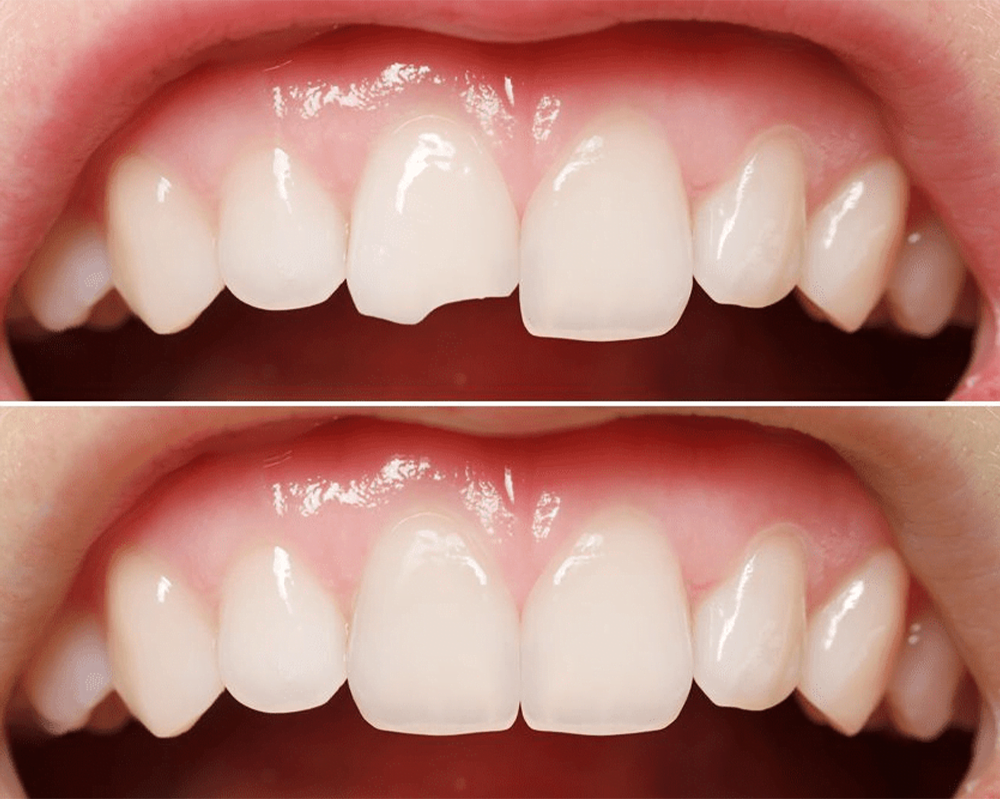
Dental caries (tooth decay or cavity) is a permanently damaged area in the hard surface of the tooth. Tooth decay has its origin in a bacterial infection which causes destruction of the hard tissue of the tooth by bacterial fermentation of food debris in the dental plaque, which results in production of acid. Poor oral hygiene, frequent snacking and sipping of sugary drinks increase the speed with which the dental plaque is built up.
The bacterias produce acid in the presence of fermentable carbohydrates, especially sucrose (table sugar). The mineral in the teeth is sensitive to an increase in acidity from the lactic acid production of bacterias.. When the pH at the surface of the tooth drops below 5.5, there is demineralization, that is, mineral is lost from the tooth. Each time we eat or drink something, especially something containing sugar, a new acid attack occurs. Individuals with little saliva, especially due to radiation therapy in the head and neck area, which has led to destruction of the salivary glands, are particularly susceptible to dental caries, as they have much less possibility to reduce the effect of the acid attack due to severely reduced amount of saliva.
Tooth decay is one of the most common dental health problems. Cavities are especially common in children, teenagers and older adults, however; anyone who has teeth can get cavities, including infants. Once the caries has been removed, a filling is made to give the tooth back its original shape.
If cavities are not treated, they get larger and affect deeper layers of your teeth. It can lead to severe toothache, infection and ultimately in advanced stages, it might not be possible to save the tooth. Regular dental visits and good brushing and flossing habits go a long way toward preventing tooth decay.
Composite Fillings

A composite (tooth colored) filling is used to repair a tooth that is affected by decay, cracks, fractures, etc. The decayed or affected portion of the tooth will be removed and then filled with a composite filling.
There are many types of filling materials available, each with their own advantages and disadvantages. You and your dentist can discuss the best options for restoring your teeth. Composite fillings, along with silver amalgam fillings, are the most widely used today. Because composite fillings are tooth colored, they can be closely matched to the color of existing teeth, and are more aesthetically suited for use in front teeth or the more visible areas of the teeth.
As with most dental restorations, composite fillings are not permanent and may someday have to be replaced. They are very durable, and will last many years, giving you a long lasting, beautiful smile.
Reasons for composite fillings:
- Chipped teeth.
- Closing space between two teeth.
- Cracked or broken teeth.
- Decayed teeth.
- Worn teeth.
How are composite fillings placed?
Composite fillings are usually placed in one appointment. While the tooth is numb, your dentist will remove decay as necessary. The space will then be thoroughly cleaned and carefully prepared before the new filling is placed. If the decay was near the nerve of the tooth, a special medication will be applied for added protection. The composite filling will then be precisely placed, shaped, and polished, restoring your tooth to its original shape and function.
It is normal to experience sensitivity to hot and cold when composite fillings are first placed, however this will subside shortly after your tooth acclimates to the new filling.
Today, many patients want to remove their amalgam fillings, which either have a silver color or appear all black. Most often the alternative is a composite filling; often referred to as a white filling. If a very large filling is needed in one of your back teeth (molars), where one generally bites with much more force, a composite filling might not be the best choice.
You will be given care instructions at the conclusion of your treatment. Good oral hygiene practices, eating habits, and regular dental visits will aid in the life of your new fillings.
Advantages with composite fillings
- Good aesthetics – since our dentist can blend shades to create a color nearly identical to that of the actual tooth. Composite is bonded to the tooth. Therefore, the remaining tooth structure is supported by the filling material, which helps to prevent fractures.
- They cost less than porcelain inlays .
- They are done usually in one dental appointment.

